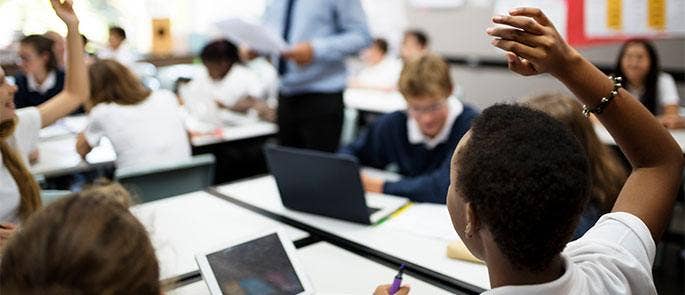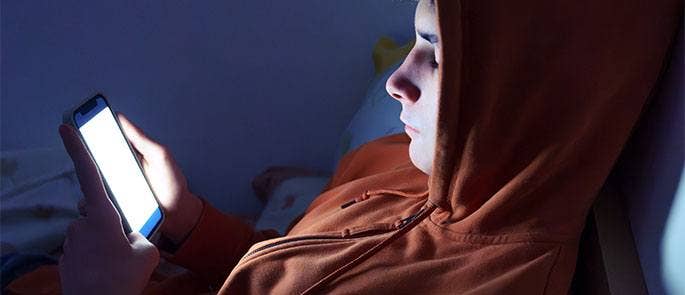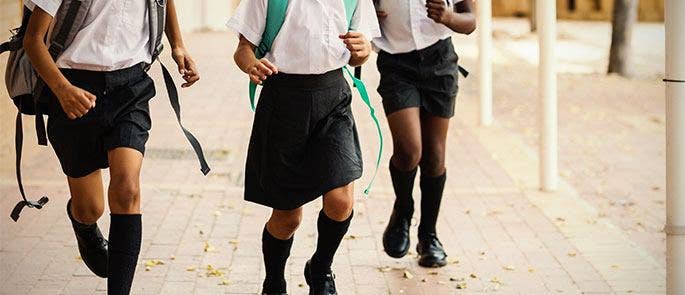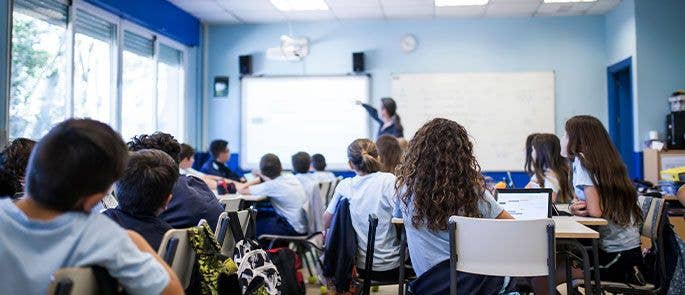Misogyny in Schools: Guidance for Teachers
In recent years there has been a worrying increase in misogynistic views and behaviours. In 2024 the National Police Chiefs’ Council and College of Policing released their National Policing Statement. The statement outlined the scale of violence against women and girls (VAWG) and deemed that it had reached epidemic levels in terms of its scale, complexity and impact on victims. VAWG is rooted in misogyny and there is an undeniable correlation between the rise in misogyny and violence against women and girls.
The prevalence of misogynistic content, coupled with the ease with which it can be accessed, has indoctrinated many children and young people. The harmful rise of toxic views seeks to normalise hatred towards women and justify further violence. Children are not immune to what they see nor do they have the cognitive awareness to question the views that are presented to them. As such, the popularity of this type of content in schools is incredibly damaging and further embeds misogyny and misogynistic behaviour into younger generations.
In this article we will outline what misogyny is and the issue that it presents in schools. We will also provide guidance on how children are exposed to misogyny and how you can go about tackling the issue in school.
What is Misogyny?
Misogyny is the hatred of women. It can manifest as contempt for, prejudice against or violence towards women and/or girls. Misogyny is rooted in the belief that women are inherently inferior because of their sex. It propagates harmful gender based stereotypes on what a woman should or shouldn’t do in society.

Like other biases, misogyny can be conscious or unconscious and it can present in many different ways, ranging from cat-calling to extreme violence. It’s important to recognise and challenge all expressions of misogyny, even the seemingly ‘smaller’ signs, as when left unchecked these can grow into more violent, extremist views.
Misogyny in Schools
There has been a significant increase in misogyny in schools as young people are exposed to toxic misogynistic content online. The views expressed in this content negatively impacts young people’s behaviour and attitudes towards women. In 2025, the University of York published a report that explored the influence of misogyny in schools. They gathered data from 200 teachers, 100 of whom were based in secondary schools and 100 of whom were based in primary schools. 76% of secondary school teachers and 60% of primary school teachers reported that they were extremely concerned about the influence of online misogyny in their school. 44% of secondary school teachers responded that they had observed female pupils being subjected to misogynistic comments and discriminatory or inappropriate behaviour. The survey found that this was also prevalent in primary schools with 40% of primary school teachers observing similar behaviour.
A 2024 survey conducted by trade union Unison and campaign group UK Feminista found that sexual harassment, sexist language and gender stereotyping were major issues in schools across the country. Of the 2,006 respondents, 25% of those based in secondary schools had witnessed sexual harassment in school in the last five years. This harassment was often instigated by male pupils towards female pupils as well as female members of staff. 34% of respondents had heard sexist language being used in school in the last five years and 51% noticed a change in behaviours linked to pupils viewing sexist content online.

As the data shows, misogynistic behaviour is rife in schools across the country. This can create an echo chamber effect in which views that are not challenged or behaviour that is not dealt with, is normalised. When young pupils see sexist content online and then come to school to share and discuss it, they echo the same views and biases. If this is then left unchallenged, the attitude is normalised and female pupils are subjected to increasingly misogynistic behaviour. This contributes to the normalisation of rape culture. ‘Rape culture’ refers to the normalisation of sexual violence and abuse towards women and girls as they are seen as ‘less than’ men and boys.
Misogynistic behaviour in schools can manifest as:
- Cyberbullying
- Sextortion
- Physical violence
- Vulgar language/cat calling
- Sharing intimate images without consent
- Harmful sexual behaviour
- Exclusion of female pupils from certain spaces or groups
These behaviours have a detrimental impact on female students and female members of staff and can lead to them feeling powerless, angry and unsafe around their male counterparts. It can also negatively affect a young person’s perception of what healthy relationships look like.
Want to Learn More?
Our range of CPD Courses for Teaching and Education can provide you with the training to develop your safeguarding knowledge and skills.
How are Children Exposed to Misogyny?
Children can be exposed to misogyny in many different ways. They may live in households where misogynistic views are often expressed and rarely challenged, or they may be exposed to misogynistic content on television or online. The charity Rape Crisis notes that because sexual violence and abuse against women and girls has been so normalised in our society, it is often glamorised in popular music, TV shows and films. When children are exposed to this type of media, they are also exposed to misogynistic views. The prevalence of this type of media then serves to normalise this violence as a ‘man’s right’ under the guise that women and girls are inherently less deserving of respect, autonomy and power.
One of the most prominent ways in which children are exposed to misogyny is online via social media. Extremely controversial figures such as Andrew Tate are often idolised by young boys who consume his sexist content and adopt his misogynistic rhetoric. Tate, who is currently under investigation by Romanian police for forming an organised criminal group, human trafficking, trafficking of minors and money laundering, has risen in popularity despite his harmful, polarising views. Tate’s popularity has been directly linked to rises in misogyny and in July 2024, Deputy Chief Constable Maggie Blyth argued that Tate played a notable role in the radicalisation of young boys online.

Unfortunately, Tate is just the tip of the iceberg and his content has acted as a gateway for many to dive further into the ‘manosphere.’ The manosphere is an online community of different forums, blogs and websites that promote misogyny, opposition to feminism and toxic masculinity. The manosphere includes Incels (involuntary celebates), Pick Up Artists (PUAs), Men Going Their Own Way (MGTOWs) and Men’s Rights Activists (MRA). Though each group has varying beliefs, they are all rooted in the same sexist belief that women and feminists are to blame for problems in society and the difficulties that men face. The manosphere ranges in degree of extremity however what can begin as a seemingly harmless interaction with a few websites or Reddit threads that claim to discuss positive masculinity, can quickly descend into violent and aggressive views towards women.
Algorithmic processes are also of significance as many social media platforms are designed to show people more of the same type of content. This means that if a child engages with a few misogynistic videos on TikTok, the content on their For You Page (FYP) will be automatically adjusted to show more of the same kind of content. Once again, this creates a vacuum in which the same views are shared with no challenge or question to their validity. In 2024 research by University College London found that social media algorithms amplify extreme content which in turn normalises harmful ideologies for young people. This further embeds misogyny into mainstream youth culture as their social media becomes saturated with anti-women views. Subsequently, their online consumption of this content impacts their offline behaviour with, as the report notes, ‘these ideologies moving off screens and into school yards.’
Primary School vs. Secondary School 
It’s important to note that primary school children and secondary school children are often exposed to misogyny via the same platforms. The popularity of apps and websites such as TikTok, Youtube and Reddit has made accessing misogynistic content much easier. For example, Rape Crisis lists the popularity of violent pornography as one of the main ways in which violence against women and girls is normalised. Studies show that by the age of 9, 10% of children have already seen pornography with that number increasing to 27% by the age of 11. This means that along with seeing age inappropriate content, primary school children are also exposed to videos and imagery that perpetuates misogyny. As mentioned above, when these children then go to school and discuss what they have seen online, it creates an echo chamber in which those who have seen similar content and share their views, validate one another’s opinions and attitudes towards women.

It would be shortsighted to think that primary school children are less likely to be exposed to misogynistic content or to express misogynistic views. In 2025 Everyone’s Invited, a charity dedicated to exposing and eradicating rape culture, published their primary school list. The list contained the names of 1,664 primary schools that had been anonymously submitted onto their website by survivors of sexual abuse during their time at primary school. The list reiterates the charity’s stance that rape culture starts in primary schools. Due to their age, primary school children are often seen as less likely to have sexist views and opinions or to exhibit violent behaviour towards one another. As such, incidents of sexual abuse or harassment are often downplayed or dismissed with the assumption that the behaviour does not carry the same connotation due to ‘childhood innocence.’ For example, a primary school teacher may excuse a young boy attempting to put his hand down a female students shirt, as neither student has gone through puberty yet, implying there was no desire for sexual gratification or control. Subsequently, when these children grow up, victims may be hesitant to share their experiences due to the belief that as in primary school, nothing will be done, whilst perpetrators are often emboldened to continue their abuse since they have faced no repercussions for their behaviour since primary school.
When exploring how children are exposed to misogynistic views it’s important to also consider at what age they are exposed. Discussing and challenging misogyny should not be reserved for older pupils as these views are prevalent amongst young children. By tackling misogyny from a young age, teachers and educators are in the best position to prevent the radicalisation of children and potential violent crimes in the future.
How to Tackle Misogyny in Schools
It’s vital that misogyny in schools is challenged and misogynistic views and opinions undermined. In so doing, schools can help to protect female students and members of staff and change views before they become violent and aggressive. Whilst tackling misogyny is everyone’s responsibility as it manifests in all facets of society, teachers are well placed to educate young people and encourage them to question the veracity of what they see online.
Challenging these views diminishes the power of the echo chamber and reiterates to young people that these views are not only unacceptable, but also that they have no place in the real world.
Ways to tackle misogyny in schools include:
Implementing a whole-school, zero tolerance approach
As mentioned above, misogyny in schools does not only impact secondary school children. By implementing a whole school, zero tolerance policy you can raise standards across the entire school and set the expectation from a young age that misogynistic views will not be tolerated.


It’s vital that your zero tolerance approach is actually zero tolerance, regardless of the nature of the misogynistic act. When Everyone’s Invited published their primary school list they also included a variety of testimonials. These testimonials included accounts from people who experienced sexual assault as young as 5. What stands out in a lot of these testimonials is how readily the behaviour was dismissed by teachers which subsequently led to more extreme assault in secondary school. Zero tolerance means no tolerance of misogyny of any kind and offering victims support when they come forward, not dismissing them or trying to excuse the behaviour as ‘boys being boys.’
It’s also important to recognise that challenging misogyny can’t be done in a one off, school wide assembly. It needs to be embedded in all aspects of school life and upheld throughout a child’s school career in order to be effective and to raise standards school wide.
Learning to recognise the signs
Misogyny can be insidious and whilst it is not always expressed loudly, it is still festering under the surface. As such, it’s important that you learn to recognise the signs. For example, incel culture uses a very specific vocabulary to derogatorily refer to different people. These include ‘Chad’ to refer to a man who is sexually attractive to women or ‘Stacy’ to refer to sexually attractive women who are viewed as unintelligent and promiscuous. In isolation these may seem like harmless words or nicknames and without a proper understanding of the context, a teacher may overhear this language and not recognise the deeper meaning.
The same is also true of emojis which have become a popular way for young people to communicate without adults knowing what they are discussing. Gaining an understanding of the slang and emojis used to spread misogynistic views enables teachers to recognise and challenge it when they see or hear it.


Other signs of misogynistic views can be sexist jokes and inappropriate comments that are laughed off as ‘banter.’ When this ‘banter’ is left unchecked, it normalises the views shared and indicates to perpetrators that they will not be reprimanded for their behaviour which can embolden them to take more aggressive steps.
Teaching about healthy relationships
When children consume misogynistic content it can warp their idea of what a healthy relationship looks like. When they enter an echo chamber that pushes one specific viewpoint as ‘normal,’ they are encouraged not to question what they see or entertain other viewpoints. As such, teaching pupils about healthy relationships can help to challenge what they have seen online and encourage them to question what they have been taught is normal. Social media and the internet dominate the lives of young people in a way that no other generation has experienced. Subsequently, they can often become immersed in online communities more so than the real world. Teaching children about healthy relationships encourages them to engage with the real world, question what they see online and learn the importance of mutual respect, trust and equality.
Providing anti-misogyny lessons
Nelson Mandela famously once said that if someone can learn to hate, they can be taught to love. Adopting this same mentality; if children can learn to hate women through the content they consume, they can be taught the importance of anti-misogyny and equality. By providing anti-misogyny lessons on a regular basis, not just as a reactive ‘special lesson,’ teachers can tackle toxic masculinity and misogynistic rhetoric. Moreover, children can be taught to recognise the signs of misogyny in others, how to challenge that behaviour and how to spot dangerous content online that can lead to the development of more extreme views.


In 2025 Stephen Graham released a series called Adolescence about a young boy who kills a young girl after being indoctrinated by incel propaganda online. The show has received acclaim for highlighting the insidious nature of misogyny and how easily young people can become swept up in violent misogynistic views. Off the back of the show, educators are calling for anti-misogyny lessons to be introduced in schools as well as for the series to be shown in schools to highlight to young people the dangers of incel/manosphere culture. The series highlights the need for a targeted approach to challenge misogyny in schools in order to change attitudes embedded in youth culture.
Engaging with external educational resources
In 2021, Everyone’s Invited published their first list of schools from which they had received testimonials of sexual abuse. The list contained almost 3,000 schools and led to responses from the police and government that more needed to be done to prevent sexual assault. The publishing of the list was monumental and shone a light on the far reaching consequences of inadequate sex education in schools. As part of their continued work to challenge rape culture, Everyone’s Invited offers an education programme of talks and workshops through which they go into schools and work with students and staff to challenge rape culture and misogyny. Tackling these topics can feel daunting for teachers and many can feel out of their depth. However, there are an increasing number of resources available and it’s important that schools engage with and utilise these where possible, rather than avoiding tackling the problem under the guise of inadequate resources.
Furthering your own understanding with training
Educating yourself through training is one of the best ways to tackle misogyny as you will gain the knowledge and understanding to recognise the signs and act accordingly. Comprehensive training such as our Online Safety & Harms, Harmful Sexual Behaviour in Schools and Prevent Duty Training courses can provide you with vital training to deepen your understanding of topics relating to misogyny. Training can also boost your confidence by giving you the tools to handle misogyny head on in a meaningful and effective way.


When left unchecked, misogyny in schools can be just the tip of a very dangerous iceberg. What begins as ‘innocent banter’ and behaviour that is excused as ‘boys being boys’ can soon descend into physical violence and aggression towards female students and members of staff. Everyone deserves equality and respect and has the right to a safe learning environment. By tackling misogyny in a meaningful and sincere way, schools have the opportunity to promote equality, challenge bigotry and provide safety for all.











